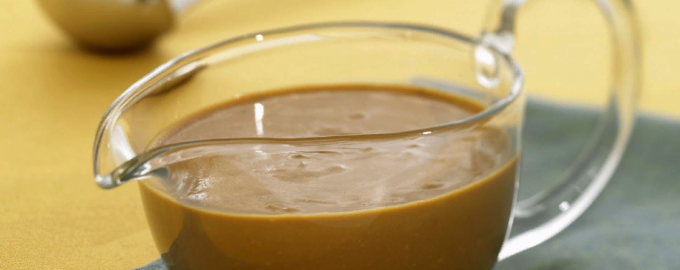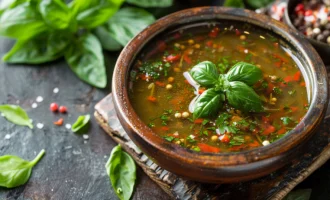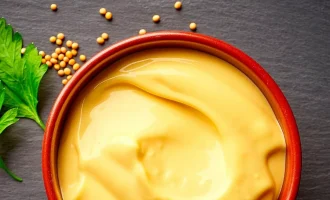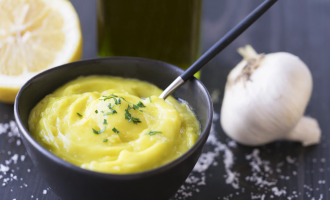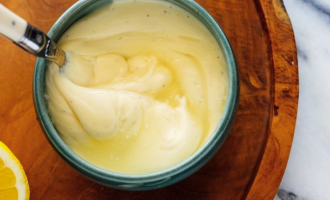Ingredients
- 30g butter
- 30g all-purpose flour
- 1 small onion, finely chopped
- 1 garlic clove, minced
- 300ml beef or chicken stock
- 2 tablespoons Dijon mustard
- 1 tablespoon white wine vinegar
- Salt and pepper to taste
Per serving
Calories: 150 kcal
Proteins: 2 g
Fats: 10 g
Carbohydrates: 12 g
Method
-
In a saucepan, melt the butter over medium heat. Add the chopped onion and minced garlic, and sauté until they become translucent and fragrant.
-
Sprinkle the flour over the onion and garlic mixture, and stir well to combine. Cook for a minute or two to cook off the raw flour taste.
-
Slowly pour in the beef or chicken stock while continuously whisking the mixture to prevent lumps from forming. Continue whisking until the mixture thickens and comes to a simmer.
-
Reduce the heat to low and add the Dijon mustard and white wine vinegar. Stir well to incorporate the flavors.
-
Simmer the sauce gently for about 10-15 minutes, stirring occasionally, to allow the flavors to meld together. Season with salt and pepper to taste.
-
Once the sauce has thickened to your desired consistency, remove it from the heat.
-
Strain the sauce through a fine-mesh sieve to remove any lumps or onion bits, if desired. This step is optional but can result in a smoother sauce.
-
The Robert sauce is now ready to be served.
The Robert sauce is commonly served with grilled or roasted meats, such as beef, pork, or lamb. It adds a tangy and slightly spicy flavor to the dish, complementing the richness of the meat.
In conclusion, Robert sauce is a classic French brown sauce made with Dijon mustard, onions, and garlic. It has a smooth and velvety texture with a delightful balance of tangy and savory flavors. The sauce enhances the taste of grilled or roasted meats and is a versatile addition to any meat dish.
Facts about the sauce:
- The Robert sauce is believed to have originated in France and has been a popular accompaniment to meats for many years.
- It is named after Robert, a character from French folklore, who was known for his love of mustard.
- The sauce can be customized by adjusting the amount of Dijon mustard and white wine vinegar to suit personal preferences.
- It can be stored in the refrigerator for a few days, allowing the flavors to further develop. Reheat gently before serving.

